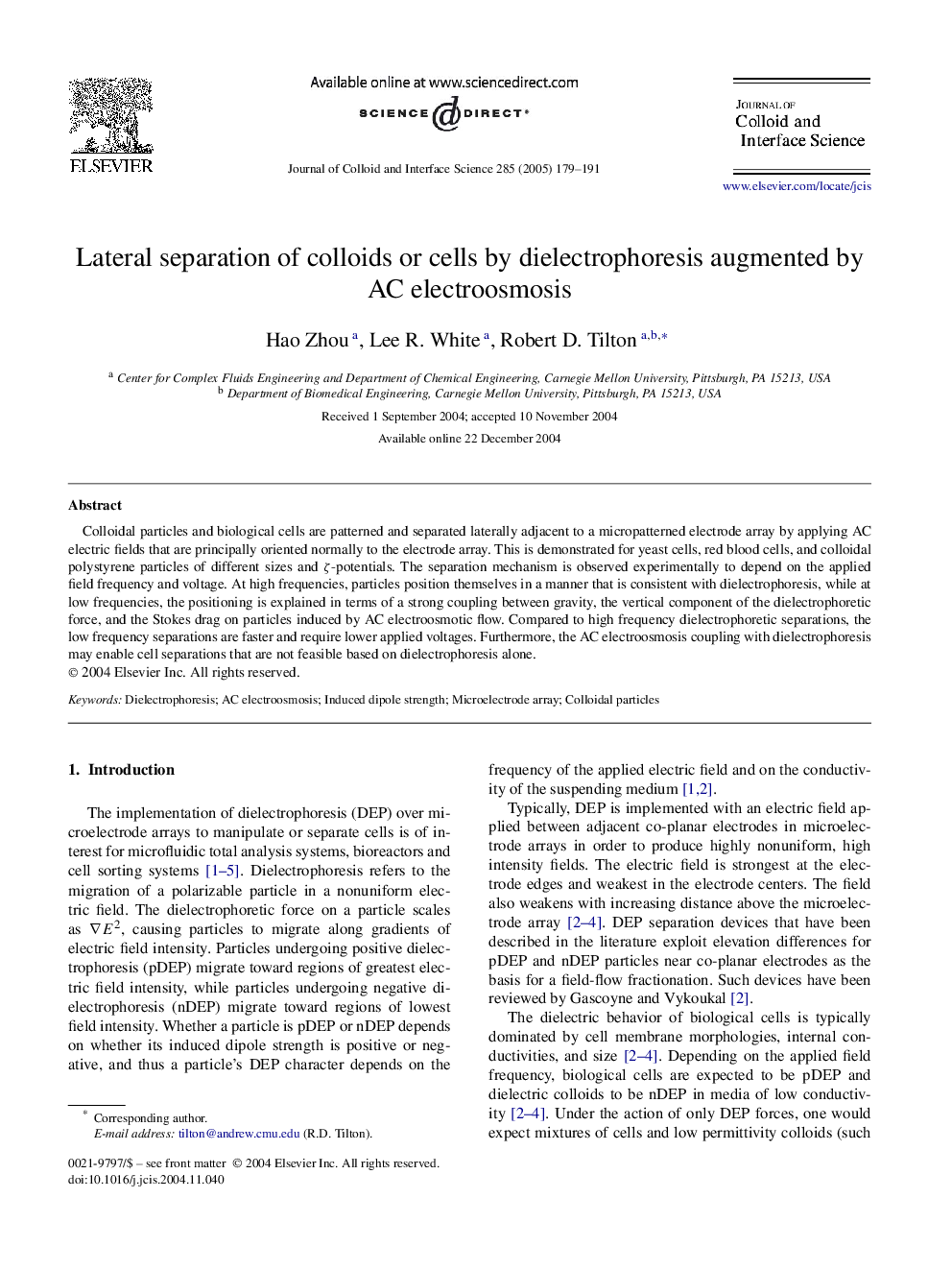| Article ID | Journal | Published Year | Pages | File Type |
|---|---|---|---|---|
| 10378074 | Journal of Colloid and Interface Science | 2005 | 13 Pages |
Abstract
Colloidal particles and biological cells are patterned and separated laterally adjacent to a micropatterned electrode array by applying AC electric fields that are principally oriented normally to the electrode array. This is demonstrated for yeast cells, red blood cells, and colloidal polystyrene particles of different sizes and ζ-potentials. The separation mechanism is observed experimentally to depend on the applied field frequency and voltage. At high frequencies, particles position themselves in a manner that is consistent with dielectrophoresis, while at low frequencies, the positioning is explained in terms of a strong coupling between gravity, the vertical component of the dielectrophoretic force, and the Stokes drag on particles induced by AC electroosmotic flow. Compared to high frequency dielectrophoretic separations, the low frequency separations are faster and require lower applied voltages. Furthermore, the AC electroosmosis coupling with dielectrophoresis may enable cell separations that are not feasible based on dielectrophoresis alone.
Related Topics
Physical Sciences and Engineering
Chemical Engineering
Colloid and Surface Chemistry
Authors
Hao Zhou, Lee R. White, Robert D. Tilton,
